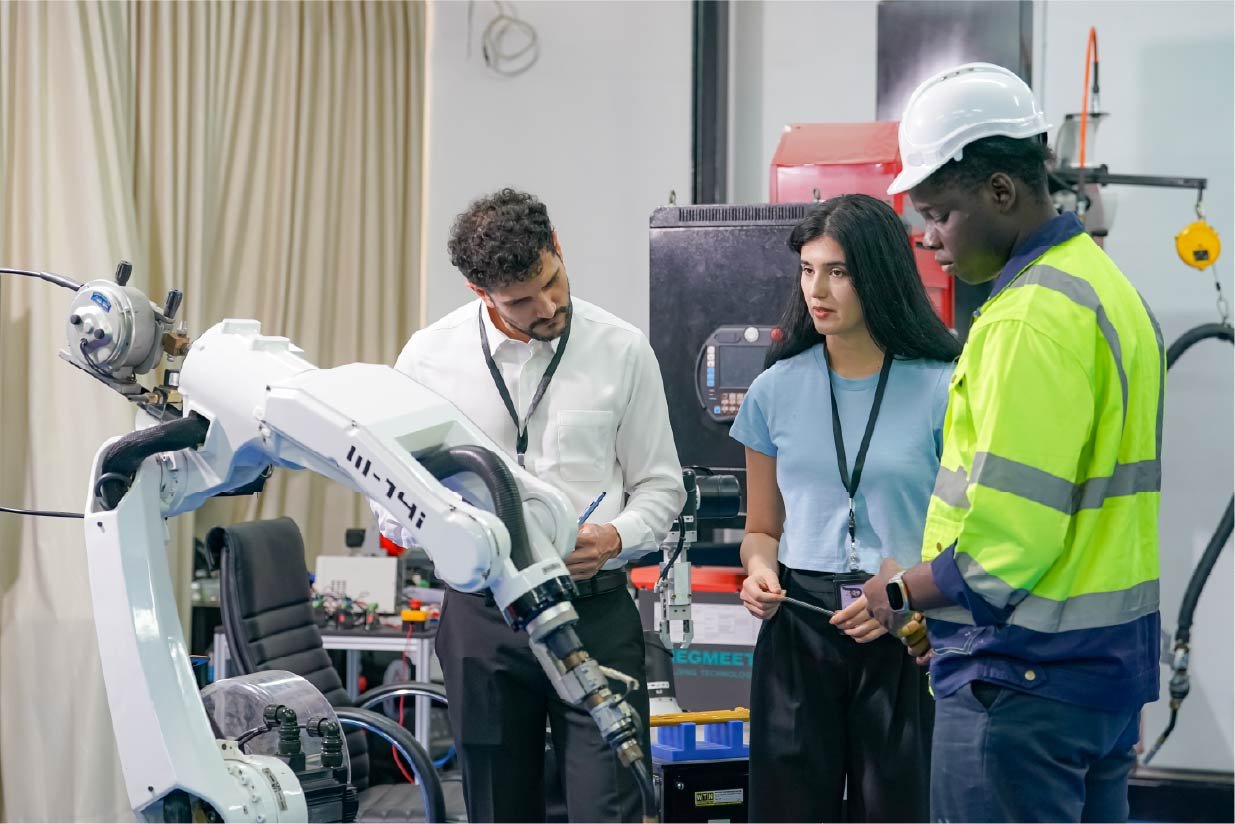
As automation takes the stage in manufacturing, robotics is expected to play an important role. The backbone of robotics is made up of compact, precise, lightweight, and smart gears that allow for smooth motion control. Having previously examined the various types of gears used in robotics, which excel at delivering high torque density in a small space, making them ideal for robotic actuators and automation systems. These gears can manage high torque loads, eliminate backlash for accurate motion control, and increase dependability in continuous operations. Their superior power transmission, efficiency, and load distribution make them the best choice for precise and efficient motion.
Planetary gears are highly beneficial in robotic applications because it characterises high reduction ratios in a small footprint, which enables large torque multiplication without increasing system size. The low backlash guarantees smooth torque transfer and precise placement, which is critical for robotic actuators with high accuracy. planetary gears’ high load-bearing capacity improves system longevity and reliability, making them ideal for continuous, high-performance robotic operations. Planetary gear systems meet the stringent requirements of modern automation and robotics by combining sophisticated materials, precision machining, and optimised lubrication to provide increased torque density, efficiency, and dependability.
Torque Density – A Serious Aspect From The Gear Manufacturers Perspective
Torque density in planetary gears is optimised using modern materials, precision manufacture, and effective thermal management. High-performance alloys, powder metallurgy, and hardened steels improve strength and wear resistance, while surface treatments such as nitriding and PVD coatings increase durability under heavy loads. Precision manufacturing procedures such as honing, grinding, and hobbing assure low tolerances for accurate gear meshing, while laser and electron beam hardening increase wear resistance without changing gear geometry. Effective lubrication with synthetic greases and specialised coatings minimises friction and increases lifespan. Planetary gear torque density can be enhanced by the use of new materials, precision manufacturing, and good thermal management. High-performance alloys, powder metallurgy, and hardened steels improve strength and wear resistance, while surface treatments like nitriding and PVD coatings extend endurance under extreme loads.
Advanced Design Strategies for Compact Robotics Applications
In robots, lightweight and high-strength are a must-have characteristics; thus, the use of composite materials and hybrid metal-polymer gears helps in increasing the strength-to-weight ratio, allowing for greater performance under high torque while keeping gear systems small and robust.
Optimised gear tooth profiles are critical to increasing efficiency. Involute gear teeth are often used in planetary gears for smooth engagement and low backlash; however, non-involute designs may be utilised in certain applications. Additionally, microgeometry improvements help reduce noise and vibration, resulting in quieter and smoother robotic operation.
Miniaturisation in gears demand micron-level tolerances for accurate meshing and low backlash. Managing micro-wear in high-cycle applications demands advanced lubricants and materials to reduce wear while maintaining performance.
Recent Innovations in Planetary Gearing for Robotics
Integration with Harmonic and Strain Wave Gearing has opened new possibilities in planetary gear systems. By combining planetary gears with harmonic or strain wave gears, hybrid drive systems offer higher torque efficiency and compact design, making them ideal for robotic actuators that require high precision and power density.
Smart sensor-integrated gear systems are transforming robotics applications. Real-time condition monitoring is enabled by inserting sensors directly into planetary gears. This link enables predictive maintenance, which reduces downtime and increases gear life. These sensors monitor crucial characteristics like temperature, vibration, and load, providing useful information for improving robotic system performance.
Additive manufacturing is also one of the most useful processes in the gear production process. 3D-printed planetary gears provide rapid prototyping and customisation, allowing for faster design changes and being suitable for on-demand manufacturing. This approach reduces lead times and makes it easier to produce intricate, optimised gear geometries that would be difficult or impossible with traditional methods.
Widely Accepted Applications of Planetary Gears
Planetary gears are crucial for high-speed, high-precision motion control in automated production lines. Their capacity to generate high torque in small forms makes them excellent for jobs that require precision and efficiency, such as material handling, assembly, and pick-and-place.
Two of the Most Crucial Future Applications of Planetary Gears
Conclusion
The rising role and need of planetary gears in the robotics industry opens up numerous opportunities for the gear manufacturers. As the technology continues to grow, the demand for more compact, efficient, and durable systems will also grow adding the potential for innovation in gear technology, providing manufacturers with the opportunity to lead the way in next-generation robotics solutions.